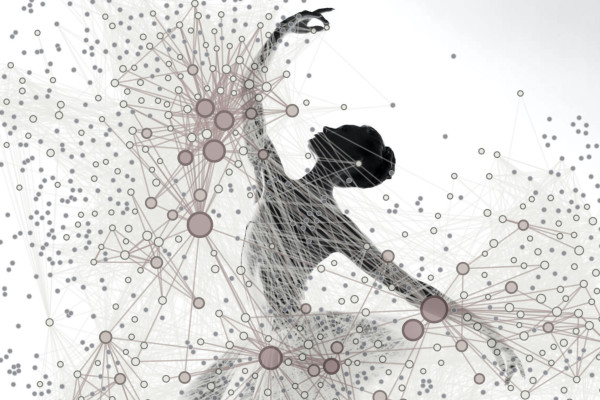
New Study Explores the World of Philanthropy and Research Funding

Private philanthropy has long been a key source of funding for U.S. scientists, particularly as government support has failed to keep pace with the rising cost of research.
But while a few large, headline-grabbing private donations have creeped into the public consciousness over the years, little is known about the much larger philanthropic ecosystem that helps underpin scientific research at U.S. universities and institutions.
A new study, co-authored by Alex Gates, an assistant professor of data science at the University of Virginia, aims to illuminate this little-known but critical element of the U.S. scientific landscape.
Gates teamed up with colleagues Louis M. Shekhtman, an assistant professor at Bar-Ilan University, and Albert-László Barabási, a professor at Northeastern University — all scientists themselves who have extensive experience operating in the world they studied.
“As researchers, we have to write grants, and we have to ask people for money,” Gates said. “And it started to occur to us that there were probably more systematic ways to identify whom we should be asking.”
To paint a full picture of philanthropic funding for scientific research, though, would require data.
Fortunately for Gates, Shekhtman, and Barabási, the IRS in recent years has made the tax form that nonprofits must file disclosing their revenue, expenditures, and other organizational information — called Form 990 — machine readable. Gates said that while some journalists have taken advantage of this treasure trove of material, “no one’s really leveraged the full extent of the data.”
Gates and his co-authors analyzed more than 3.6 million tax records filed by approximately 685,000 universities and research institutions between 2010 and 2019. From their analysis, which employed machine learning and network science, emerged a rich and complex portrait of the many dynamics driving philanthropic support of science in the United States.
For starters, the authors identified the full magnitude of philanthropic spending on scientific research: 69,675 nonprofits gave and received 926,124 grants totaling $208 billion during the period examined. In recent years funding levels reached $30 billion annually, which approaches the amount of support provided by the National Institutes of Health.
While the assumption might be that multimillion-dollar donations are driving this spending, large gifts are, in fact, an anomaly, Gates said.
“The largest donations are very few in number; there are many, many more very small donations,” he said.
The authors were also able to explore what factors drove a philanthropic group’s decision to donate. They found that the scientific potential of a proposal was not necessarily the determinant.
“When you focus on science, we think it’s a meritocracy, right? Always the best scientific ideas should be getting the most money,” Gates said, describing the perception of philanthropic support. However, the authors found that other factors influenced giving patterns, including geography.
“Some philanthropists make it very explicit that they give to their local communities,” Gates said. However, even for organizations that have a global mission, such as the Seattle-based Bill & Melinda Gates Foundation, location can matter.

“The Gates Foundation is a great example. Their biggest donation was to the University of Washington. It turns out they favor things in Seattle much more than they declared,” he explained.
The authors also found that the amount of philanthropic dollars institutions receive is highly correlated to the degree of support provided by the National Science Foundation, a federal agency, suggesting that inequalities that have been identified in public financing of research may also occur in philanthropic giving.
Additionally, private donors and nonprofits tend to support the same organizations over time, the analysis showed.
To illustrate, the authors found that there was an 80% chance that a donor who gave to an organization two years in a row would support it the following year; for funding relationships that had lasted seven years, the probability is even higher, with a 90% likelihood support would continue.
The authors note that this funding continuity could be beneficial for research by allowing organizations to take more risks and tackle more complex challenges. However, this phenomenon may simply reflect inertia, they pointed out, which could lead to funding shortfalls for organizations that experience state or federal funding cuts.
There is also evidence that donors with shared priorities often support the same groups, which, the authors note, could inhibit the ability of other institutions to gain funding.
The key objective for Gates, Shekhtman, and Barabási was to determine whether they could develop a model that could predict which groups would receive philanthropic funding.
Such a tool could enhance the public’s understanding of the impact of philanthropy on science and help researchers gain access and awareness of the philanthropic options that could advance their work.
The network-based model they ultimately developed, Gates explained, was similar to the original Netflix algorithm that the company used to offer movie recommendations to customers based on their prior viewing habits.
“We got fairly high accuracy for this model, so that was really encouraging,” he said.



